I've returned to iOS development after a while and I'm rebuilding my Objective-C app from scratch in SwiftUI.
One of the things I want to do is use the default Edit Mode to allow entries in a List (backed by Core Data on CloudKit) to switch between a NavigationLink to a detail view and an edit view.
The main approach seems to be to handle it through a if statement that detects edit mode. The Apple documentation provides the following snippet for this approach on this developer page: https://developer.apple.com/documentation/swiftui/editmode
@Environment(\.editMode) private var editMode
@State private var name = "Maria Ruiz"
var body: some View {
Form {
if editMode?.wrappedValue.isEditing == true {
TextField("Name", text: $name)
} else {
Text(name)
}
}
.animation(nil, value: editMode?.wrappedValue)
.toolbar { // Assumes embedding this view in a NavigationView.
EditButton()
}
}
However, this does not work (I've embedded the snippet in a NavigationView as assumed). Is this a bug in Xcode 13.4.1? iOS 15.5? Or am I doing something wrong?
Update1:
Based on Asperi's answer I came up with the following generic view to handle my situation:
import SwiftUI
struct EditableRow: View {
#if os(iOS)
@Environment(\.editMode) private var editMode
#endif
@State var rowView: AnyView
@State var detailView: AnyView
@State var editView: AnyView
var body: some View {
NavigationLink{
if(editMode?.wrappedValue.isEditing == true){
editView
}
else{
detailView
}
}label: {
rowView
}
}
}
struct EditableRow_Previews: PreviewProvider {
static var previews: some View {
NavigationView {
VStack {
EditButton()
EditableRow(rowView: AnyView(Text("Row")), detailView: AnyView(Text("Detail")), editView: AnyView(Text("Edit")))
}
}
}
The preview works as expected, but this works partially in my real app. When I implement this the NavigationLink works when not in Edit Mode, but doesn't do anything when in Edit Mode. I also tried putting the whole NavigationLink in the if statement but that had the same result. Any idea why this isn't working?
Update2:
Something happens when it's inside a List. When I change the preview to this is shows the behavior I'm getting:
struct EditableRow_Previews: PreviewProvider {
static var previews: some View {
NavigationView {
List {
EditableRow(rowView: AnyView(GroupRow(title: "Title", subTitle: "Subtitle", type: GroupType.personal)), detailView: AnyView(EntryList()), editView: AnyView(Text("Edit")))
}
.navigationBarItems(trailing:
HStack{
#if os(iOS)
EditButton()
#endif
}
)
}
}
}
Update3:
Found this answer: SwiftUI - EditMode and PresentationMode Environment
This claims the default EditButton is broken, which seems to be true. Replacing the default button with a custom one works (be sure to add a withAnimation{} block to get all the behavior from the stock button. But it still doesn't work for my NavigationLink...
Update4:
Ok, tried passing an "isEditing" Bool to the above View, not to depend on the Environment variable being available. This works as long as the View (a ForEach within a List in my case) isn't in "Editing Mode" whatever happens at that point breaks any NavigationLink it seems.
Update5:
Basically my conclusion is that the default Edit Mode is meant to edit the "List Object" as a whole enabling moving and deleting of rows. In this mode Apple feels that editing the rows themselves isn't something you'd want to do. I can see this perspective. If, however, you still want to enable a NavigationLink from a row in Edit Mode, this answer should help: How to make SwiftUI NavigationLink work in edit mode?
Asperi's answer does cover why the detection doesn't work. I did find that Edit Mode detection does work better when setting the edit mode manually and not using the default EditButton, see the answer above for details.

